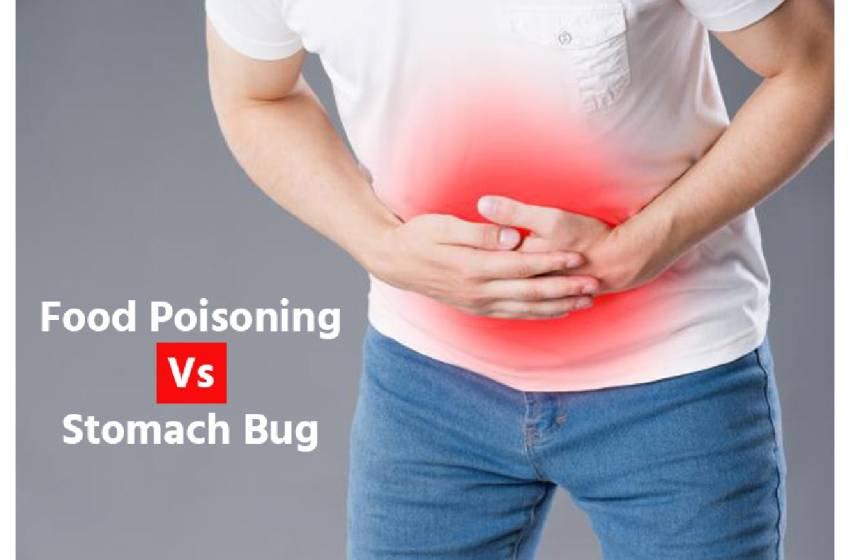
Food Poisoning vs. Stomach Bug
Table of Contents
Food Poisoning vs. Stomach Bug: A Detailed Overview
Food poisoning and stomach bugs (viral gastroenteritis) are two common gastrointestinal illnesses that cause similar symptoms, such as vomiting, nausea, diarrhea, and stomach cramps. However, they have distinct causes, modes of transmission, and treatment approaches. Understanding the differences can help individuals seek appropriate medical care, prevent future occurrences, and manage symptoms effectively.
Causes of Food Poisoning vs. Stomach Bug
Food Poisoning: It is caused by eating dirty food or beverages that include harmful bacteria, viruses, parasites, or toxins. Common culprits include:
- Bacteria: Salmonella, E. coli, Listeria, Clostridium perfringens, and Campylobacter
- Viruses: Norovirus, Hepatitis A virus
- Parasites: Giardia, Cryptosporidium, Toxoplasma
- Toxins: Created by bacteria like Staphylococcus aureus and Bacillus cereus
Contamination can arise due to improper food handling, poor hygiene, undercooked or raw food, and food left at unsafe temperatures.
Stomach Bug (Viral Gastroenteritis): A stomach bug is primarily caused by viral infections that affect the digestive system. The most common viruses include:
- Norovirus (leading cause in adults)
- Rotavirus (common in children)
- Adenovirus
- Astrovirus
Viral gastroenteritis is highly spreadable and spreads through direct contact with a diseased person, contaminated food and water, or touching infected surfaces and the mouth.
Symptoms of Food Poisoning vs. Stomach Bug
Although food poisoning and stomach bugs share several symptoms, the onset, duration, and severity can vary.
Food Poisoning Symptoms:
- Sudden onset, usually within a few hours to a day after consuming contaminated food
- Nausea and vomiting
- Abdominal cramps
- Diarrhea (may contain blood or mucus in bacterial infections)
- Fever (in some cases)
- Fatigue and weakness
- Dehydration (severe cases)
Stomach Bug Symptoms:
- Gradual onset, typically 1-3 days after exposure
- Nausea and vomiting
- Watery diarrhea
- Mild to moderate abdominal cramps
- Low-grade fever
- Body aches and chills
- Fatigue and dehydration
Duration of Food Poisoning vs. Stomach Bug
Food Poisoning: Symptoms can end a few hours to several days, depending on the contaminant type and the infection’s severity. Most bacterial infections resolve within 24-48 hours, while some cases (e.g., Salmonella) may persist for up to a week.
Stomach Bug: Symptoms usually last between 1 to 3 days, but some viral infections, like norovirus, can extend up to a week in severe cases. Rotavirus infections in children can last even longer.
Diagnosis
While both illnesses often resolve without medical intervention, severe cases may require diagnostic tests.
- Food Poisoning: Stool cultures, blood tests, or food sample analysis may be conducted to identify bacterial, viral, or parasitic causes.
- Stomach Bug: Diagnosis is primarily based on symptoms and patient history. Sometimes, stool tests may be conducted to rule out bacterial infections.
Treatment of Food Poisoning vs. Stomach Bug
Food Poisoning:
- Hydration: Drink plenty of fluids and add oral rehydration solutions (ORS) to prevent dehydration.
- Diet: Eating bland foods like crackers, rice, and bananas once vomiting subsides.
- Medications: In severe bacterial infections, antibiotics may be prescribed. Anti-diarrheal medications (e.g., loperamide) should be used cautiously as they can worsen some bacterial infections.
- Rest: Allowing the body to recover by getting plenty of rest.
Stomach Bug:
- Hydration: Preventing dehydration is crucial. Sipping water, electrolyte drinks, or clear broths can help replenish lost fluids.
- Diet: The BRAT diet (Bananas, Rice, Applesauce, Toast) is often recommended to ease digestion.
- Medications: Over-the-counter anti-nausea or anti-diarrheal medications may help but should be used under medical advice, especially in children.
- Rest: Sufficient sleep and rest are required for recovery.
Prevention of Food Poisoning vs. Stomach Bug
Preventing Food Poisoning:
- Wash hands, utensils, and surfaces frequently.
- Cook meat, poultry, and seafood to take internal temperatures.
- Store food at safe temperatures and avoid consuming expired products.
- Avoid cross-contamination by using individual cutting boards for raw and cooked foods.
- Be careful when consuming raw or undercooked foods (e.g., sushi, raw eggs, unpasteurized dairy).
Preventing Stomach Bugs:
- Wash hands completely with soap and water before eating and using the restroom.
- Avoid close contact with infected individuals.
- Disinfect usually touched surfaces like doorknobs and countertops.
- Drink clean, purified water and avoid consuming food from questionable sources.
- Consider vaccinations for rotavirus in infants and young children.
When to Seek Medical Help
While both food poisoning and stomach bugs often resolve on their own, medical attention may be necessary if:
- Severe dehydration occurs (dry mouth, dizziness, infrequent urination, or dark urine)
- High fever persists (above 102°F or 39°C)
- Bloody stools or persistent vomiting occurs
- Symptoms last longer than a week
- There is difficulty keeping fluids down
Conclusion
Food poisoning and stomach bugs are unpleasant gastrointestinal illnesses that can disrupt daily life. While they share many symptoms, understanding their causes, differences in onset and duration, and appropriate treatments can help in effective management and prevention. Maintaining proper hygiene, handling food safely, and staying hydrated can substantially reduce the risk of these infections. If symptoms become severe or prolonged, seeking medical assistance is always advisable.


